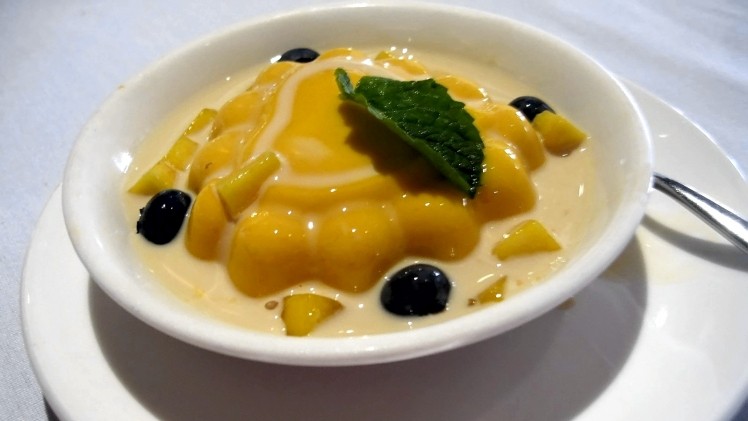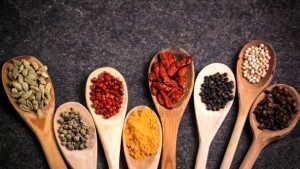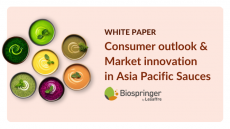China direct
HK consumer survey finds sizeable sugar rush in traditional desserts

Of the 100 non-prepackaged sweet soup samples tested, 51 contained sugar equal to or more than 50% of the daily recommended intake limit.
One mango sago dessert with pomelo was found to contain 11g sugar per 100g, which would exceed the intake limit by 32%.
The sugar contained in both sweet potato sweet soup and mung bean sweet soup ranked in second and the third places, averaging 10g and 9.5g sugar per 100g.
The test covered 10 common non-prepackaged sweet soups, with 100 samples collected from dessert stores, restaurants and soybean shops for testing.
Hongkongers generally consider desserts containing fruits to be healthy, though three samples of the mango sago dessert with pomelo had the highest sugar content with 12g sugar per 100g—more than the sugar contained in an equivalent measure of Coca-Cola.
Consuming a 330g portion of the dessert would represent a sugar intake of 40g—accounting for 80% of the World Health Organisation recommended daily sugar intake limit of 50g, based on a daily energy intake of 2,000 Kcal.
The Consumer Council also warned consumers that some sweet soups might take diners far over the limit due to varying sizes, with some portions weighing in as large as 600g.
The council said the variance between samples suggested that there was scope for food outlets to reduce sugar, and has called on premises to consider listing the nutrition values of their sweet soups on menus.
The study also examined the nutrition labels of 11 pre-packed sweet soups, with a soybean curd dessert having the highest average sugar content, with 9.9g of sugar per 100g.
Red bean sweet soup had the lowest sugar content with an average of 7g per 100g, whereas one sample contained just 4.8g of sugar per 100g.
Meanwhile, some 100 types of pre-packaged food such as yoghurt and biscuits are likely to come under a labelling scheme that identifies products with lower salt and sugar content.
Bernard Chan, chairman of the Committee on Reduction of Salt and Sugar in Food, said the scheme aimed to provide consumers with a clearer and easier means to identify healthy food. It is expected to launch in the fourth quarter of next year.
Chan said that there would be four categories for the labels: “low sodium”, “no sodium”, “low sugar” and “no sugar”.
He added: “These food items might have their own labels now. We hope to standardise them in the future.”
More stories from Greater China…
Market research confirms emerging Chinese consumer trends
Nearly half of Chinese consumers now consider themselves to be “adventurous” when it comes to trying out new food and beverage products—a substantial increase over the respondents to the same study four years ago.
According to Kantar TNS, 45% of Chinese consumers relish the opportunity to develop new tastes, compared to 34% in 2012.
In its new “Food & Beverage China” study, the market research agency also found that 51% of the 7,700 consumers it surveyed across more than 30 Chinese cities were more willing than before to pay a premium for groceries with add-on benefits.
In addition, 65% of Millennial consumers said that they ate primarily according to their mood—a ratio much higher than that of consumers who were born in the Seventies and Eighties.
The results show that views of younger Chinese shoppers match a broad swath of opinion that believes the Chinese market is open to discovering new—and international—tastes as they become wealthier and more discerning.
They also suggests that consumers are becoming less likely to buy the same products each week, instead choosing to sample a range of options.
"As consumers are getting more segmented, the nuances in consumer needs are providing marketers with unlimited challenges and opportunities in terms of product innovation,” said Deepender Rana, chief executive of Kantar TNS China.
Chinese import regulations might be more ‘predictable’ after Pinoy thaw
Filipino exporters have been complaining about Chinese rules governing the import of agricultural products, calling them “unpredictable” and “restrictive” despite a recent government pivot to Beijing.
The president of the Philippine Food Processors and Exporters Organisation (Philfoodex), Roberto C. Amores, told BusinessWorld that agricultural exporters believe the restrictions are a result of a continuingly difficult relationship with China.
“We would want them to work out on the unpredictable restrictions that are imposed by the Ministry of Agriculture of China. Sometimes they are strict, sometimes not,” Amores said.
“Unpredictable quarantine measures are perceived by Filipino exporters to be related to political constraints,” he explained, adding that issues have been affecting all all agricultural segments.
Citing Philippine mangoes, Amores said that these require vapour heat treatment under Chinese regulations to kill fruit flies—even if exporters from other nations do not face the same consistently applied requirement.
“Vapour heat treatment will affect the shelf life and quality of the mango. We should be allowed to export mango without that quarantine treatment. They are talking about fruit flies, which affect Chinese agriculture more than they do the Philippines,” Amores said.
Such supposed unpredictability dates back to 2012, when tensions began to escalate over the Scarborough Shoal reef, which China has been developing into a man-made island—an issue which the Philippines referred to an United Nations Arbitral Tribunal.
In March that year, tons of fresh banana were forced to be discarded over allegations of excessive pest content and fungal infestation.
Food exports from the Philippines to China amounted to US$400m in 2015 out of overall shipments worth US$5bn.
Amores said he would like this figure to grow by as much as US$1bn as relations between the two countries thaw.
Newly elected President Rodrigo Duterte, a populist firebrand, recently turned his back on America, a longstanding ally, following talks in Beijing with President Xi. Following that visit, which brought home some US$24bn worth of agreements, Duterte’s rhetoric has become increasingly pro-China.
“Our wish list is we hope they remove the unpredictable restrictions from non-tariff measures. We wish an unimpeded flow of our agricultural exports to China. We wish China relaxes all those unpredictable quarantine measures if they are really serious in supporting the agricultural sector of the Philippines,” Amores added.














